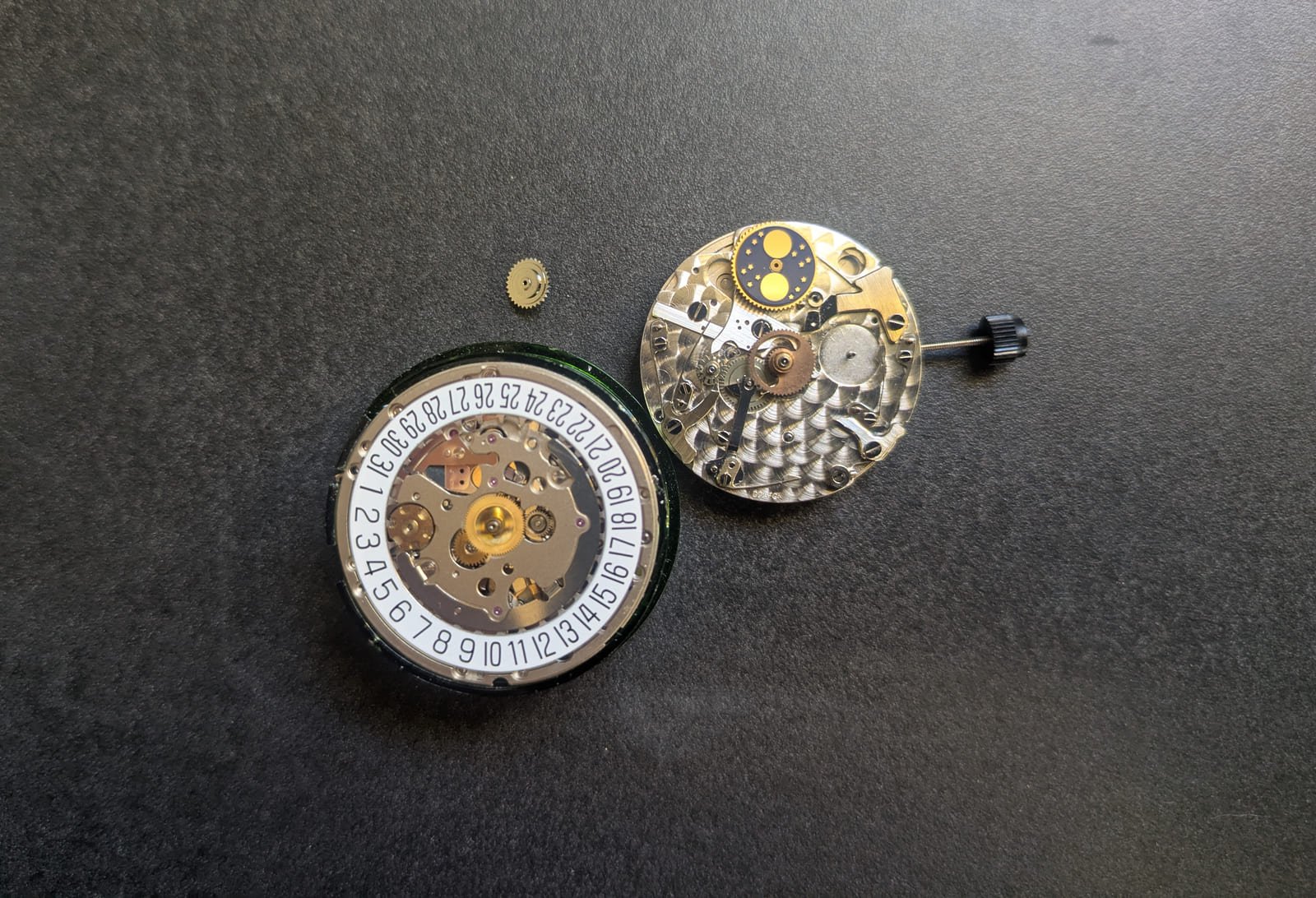Why the quality of a movement is not always visible to the naked eye
You turn the watch over, the sapphire caseback reveals a ballet of wheels and a half-moon rotor. It’s beautiful, hypnotic. But beauty, in mechanical watchmaking, is not just a matter of reflections. Recognizing a quality automatic movement means reading between the lines of a caliber: its finishes, its architecture, its ability to keep time and last. It also means understanding what marketing doesn’t say, and what the old workshops still whisper: quality is in the details, in the gesture of adjustment as much as in the polished steel.
Finishes: the grammar of beauty done well
The finishing touches on a movement are not just decorative; they sign a level of requirement. They require time, tools and a steady hand. They tell the story of the culture of the house.
- Anglage: the mirror-polished chamfer that runs along the bridges. THE re-entrant angles (interiors) very vivid betray manual work; a machine has difficulty digging them clearly.
- Côtes de Genève: these wavy stripes born in the 19th century. They must be regular, without burrs at the edges of the bridges.
- Beading: the pearly pellets on the plate. Homogeneous density, controlled coverage: a living pattern, not a simple stamping.
- Spiraling and sunbathing: on barrels and wheels, indicate the care given to functional components.
- Blued screws: heat (deep blue) rather than tinted. A detail that exudes tradition.
Warning: a flashy laser-etched rotor is not enough. Look for consistency: careful finishing even in hidden areas, countersunk screws, clean edges. A well-finished movement is a movement respected by the person who put it together.
Architecture and materials: quality that cannot be boasted of
Beyond the appearance, the structure of the movement and the choice of materials reveal its robustness.
- Regulating body: a balance with variable inertia (screws or weights) favors long-term stability compared to a simple racket. A balance spring made of silicon or non-magnetic alloy improves resistance to magnetic fields and corrosion.
- Shockproof protection: Incabloc, KIF or equivalents protect the balance shaft. Their presence and quality count on an everyday watch.
- Frequency and torque: 4 Hz (28,800 A/h) offers a smoother running second and good position hold; 3 Hz (21,600 A/h) can favor autonomy. The main thing isisochronism (regularity of operation throughout the reserve), not the only frequency.
- Rotor and winding: ceramic ball bearing, controlled lubrication, well-designed bidirectional or unidirectional winding. A very free and noisy rotor is not necessarily a fault (the “wobble” of a 7750 is a classic), but the winding efficiency must be there.
- Number of rubies: a reliable automatic caliber is often between 24 and 31 jewels. Beyond that, beware of decorative inflation.
Precision and adjustment: the truth of the stopwatch
A mechanical movement is alive; quality is measured in its ability to keep time well, everywhere and for a long time.
- Certifications: COSC (-4/+6 s/d), METAS (0/+5 s/d and reinforced anti-magnetism), historical observatories… Certification is not obligatory, but it provides a framework.
- Adjustment in positions: a good caliber is adjusted in several positions (at least 4, often 5 or 6). This is where daily coherence comes into play.
- Amplitudes and beat: at full cocking, a healthy amplitude is typically between 270° and 310°. A beat error low indicates careful tuning.
- Stability over time: precision over time is linked to lubrication, quality of materials and care of assembly.
Ask for figures, not slogans: announced tolerances, adjustment in positions, possible switch to the chronocomparator during sale or service.
Automatic winding efficiency: the heart that recharges
An automatic mechanical movement must be wound quickly on the wrist, without wasting energy.
- Architecture of reassembly: ratchet systems (“Magic Lever” type) or deflection trains, each solution has its virtues. The main thing is the efficiency and reliability of the inverters.
- Slipping clutch: avoids overtensioning of the spring. Essential, but its quality influences wear.
- Power reserve: 38 to 45 hours was the norm; 60 to 72 hours is becoming common. More is not always better if the torque at the end of the reserve collapses: watch the isochronism.
Repairability and pedigree of the caliber
A quality movement is also a serviceable movement. The nobility of a caliber is measured by its ability to stand the test of time.
- Parts availability: spare parts networks, documentation, training of watchmakers. A renowned industrial caliber (ETA, Sellita, Miyota, Seiko) reassures for maintenance; a serious “manufacturer” must offer the same sustainability.
- Clear architecture: accessible bridges, well integrated modules. An integrated chronograph differs from a module placed on a three-hander: neither is bad, but transparency on the architecture matters.
- Lineage: a movement whose lineage has proven itself (the historic “tractors” or rigorously designed newcomers) inspires confidence.
Fake friends to avoid
Spectacular skeletonization does not guarantee quality; it sometimes even complicates readability and stability. A perforated rotor is not worth a good adjustment. A tungsten mass does not compensate for poorly done winding. Look for technical consistency, not fluff.
Express checklist before falling in love
- Clean finishes: clean beveling, regular Geneva stripes, homogeneous beading, flame-blued screws.
- Regulating organ: balance with variable inertia, non-magnetic hairspring if possible.
- Anti-shock present and neat; rotor on quality bearing.
- Clear stated precision, ideally with multi-position adjustment or certification.
- Sufficient power reserve and careful isochronism.
- Caliber with solid pedigree and parts available for service.
Behind the scenes: the culture of caliber
Recognizing a quality automatic movement means learning an alphabet: beveling, dimensions, amplitude, isochronism. It is accepting that virtuosity is sometimes hidden in the sobriety of a well-beveled bridge, in the silence of a rotor firmly on its balls, in the second which does not deviate for an entire weekend. Beautiful mechanics is not a spectacle, it is a conversation between time and the hand that tamed it. And on your wrist, it reflects your taste for well-made things, those that last, far from fashion and close to the essential.
